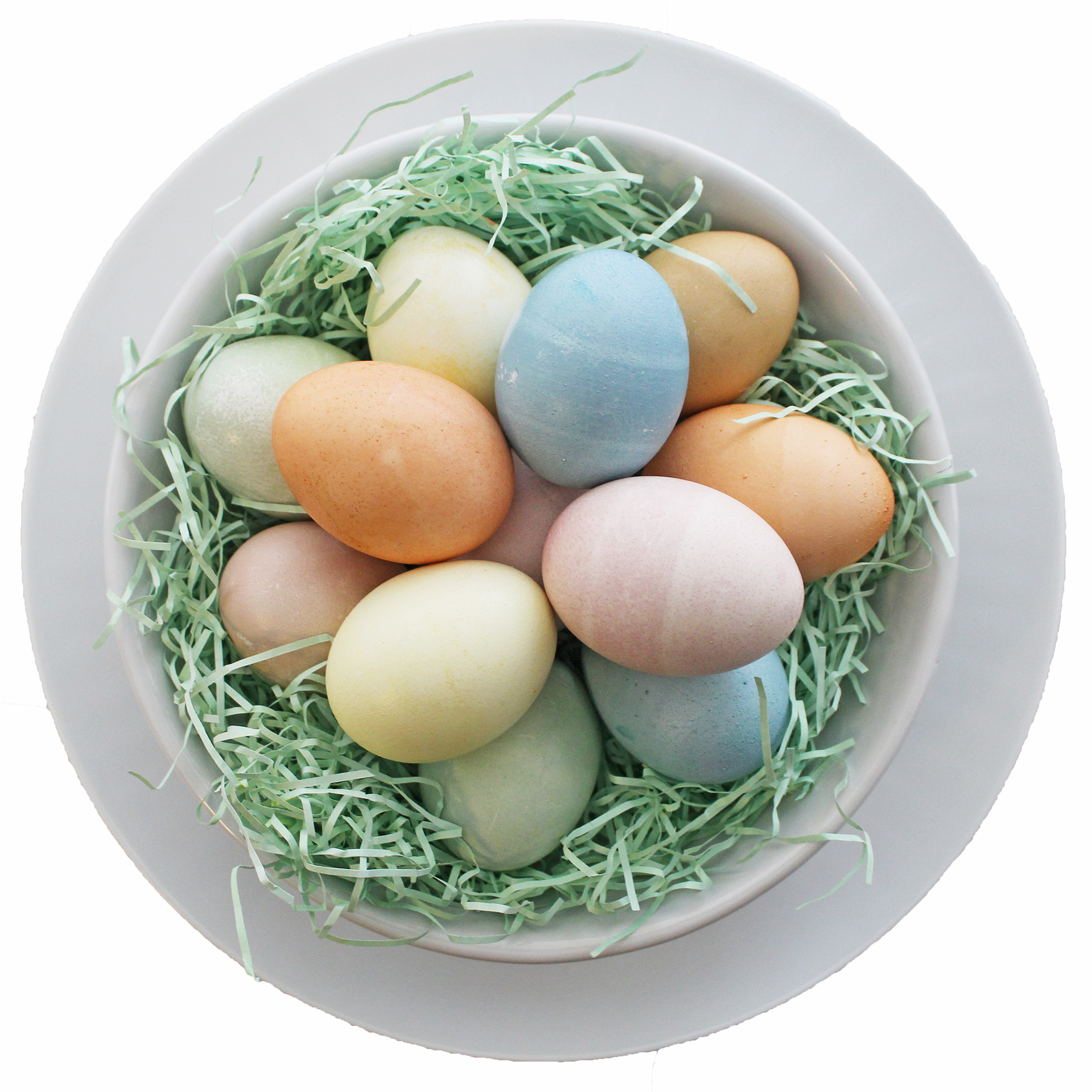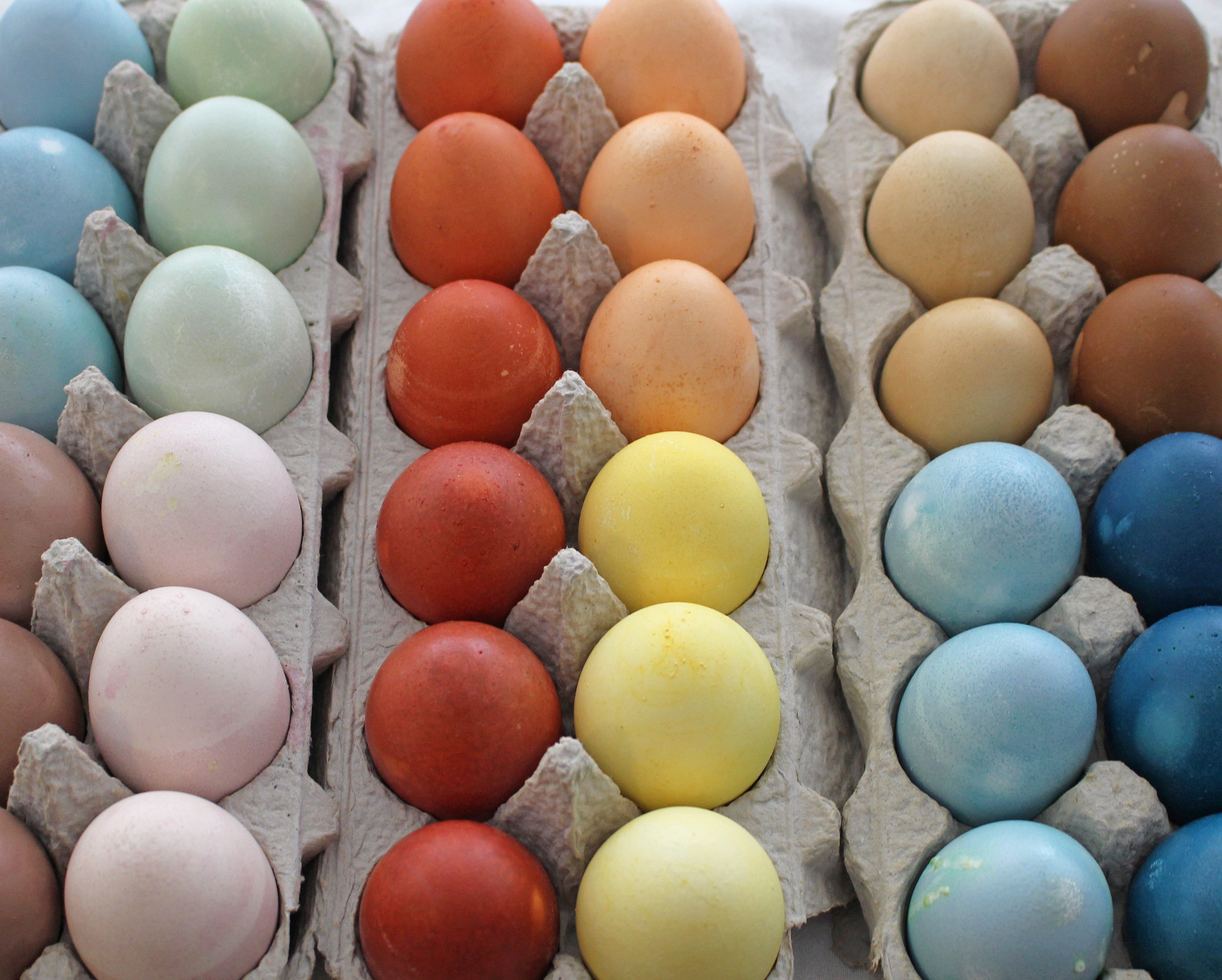When I was growing up, my mother and grandmother would dye Easter Eggs using red onion skins. Using this method, the eggs turn a rich sienna color. But it turns out that many different types of vegetables, fruit juices and spices can be used to dye eggs - as well as red wine and strong brewed coffee/tea. 
Natural dyes are very simple to make and are basically variations on the same theme. Some people boil the eggs in the dye solution. I opted to color warm, hard cooked eggs.
I made 3 Vegetable Dyes this year, using sugar beets, purple cabbage and yellow onion skins. These are admittedly the most labor intensive and messy of the bunch, but the results are well worth the effort.
Sugar Beets = mauve pink
Purple Cabbage = 'robin's egg' blue.
Yellow Onion Skins = orange
Red Onion Skins = sienna
Some people boil spinach to extract its color and make green eggs. It didn't work for me. As an alternative, I dyed the eggs yellow using turmeric (see below) and then soaked them for a few minutes in the purple cabbage dye to make them green.
To make the dyes, the vegetables need to boil for approximately 30 minutes to extract their color. After the vegetables/skins are strained off, add 2 tablespoons of white vinegar and 2 tablespoons of salt to each quart of liquid.
I would highly recommend using disposable gloves if you have them, as these dyes are unforgiving on nails and cuticles!

Making dyes from Spices is less time consuming, but yields equally lovely results. I used turmeric, but cumin, celery seed, dill seed or paprika can also be used.
Turmeric or Cumin = yellow
Celery Seed = green
Dill Seed = golden brown
Paprika = brick red
To make the spice dyes, add several tablespoons of spice to one quart of boiling water. Add 2 tablespoons of white vinegar, stir and then stand back. The fumes are very strong!
The easiest dyes to make are from Fruit juices, Wine, Coffee or Tea.
Grape Juice or Brewed Red Zinger Tea = lavender
Cranberry Juice = light pink
Brewed Coffee = brown
Red Wine = deep purple
These dyes do not need to be heated. Simply add 2 Tablespoons of white vinegar for every quart of liquid and stir well.
All of the dyes can be made ahead of time, and stored tightly covered until ready to use. (You don't want to spill beet or red cabbage dye, believe me.) I would recommend storing the vegetable and fruit juice dyes in the refrigerator, to prevent them from spoiling.

For the pastel colors, I soaked the eggs for approximately 30 minutes. The dyes from sugar beets and coffee take a little bit longer. For the deeply colored eggs, I soaked them overnight.
Naturally dyed eggs have a beautiful matte finish. If you would prefer a glossier finish, the eggs can be polished with a very small amount of vegetable oil.
Whatever you do, have fun and experiment. This process is very forgiving and the results are just lovely.